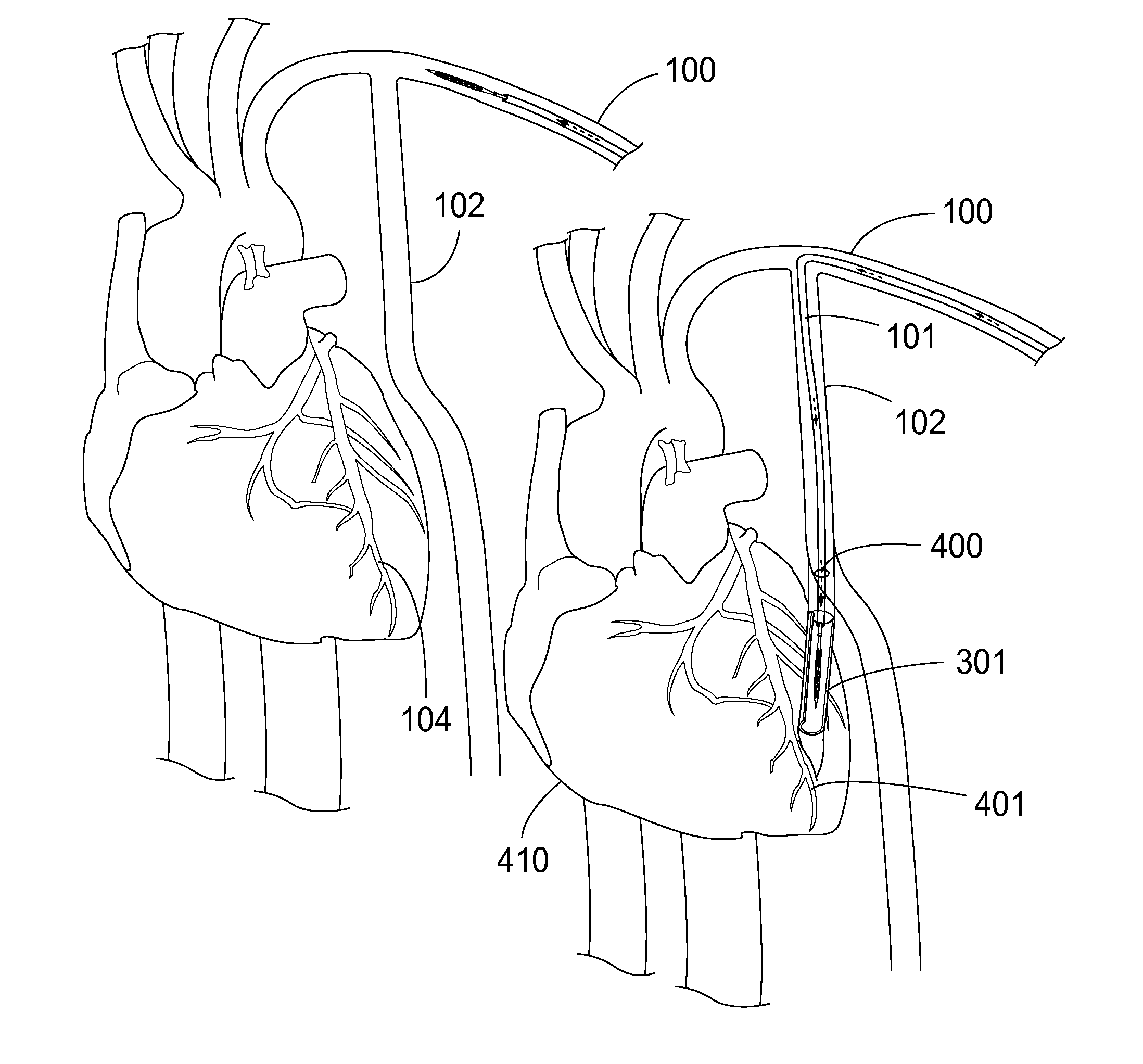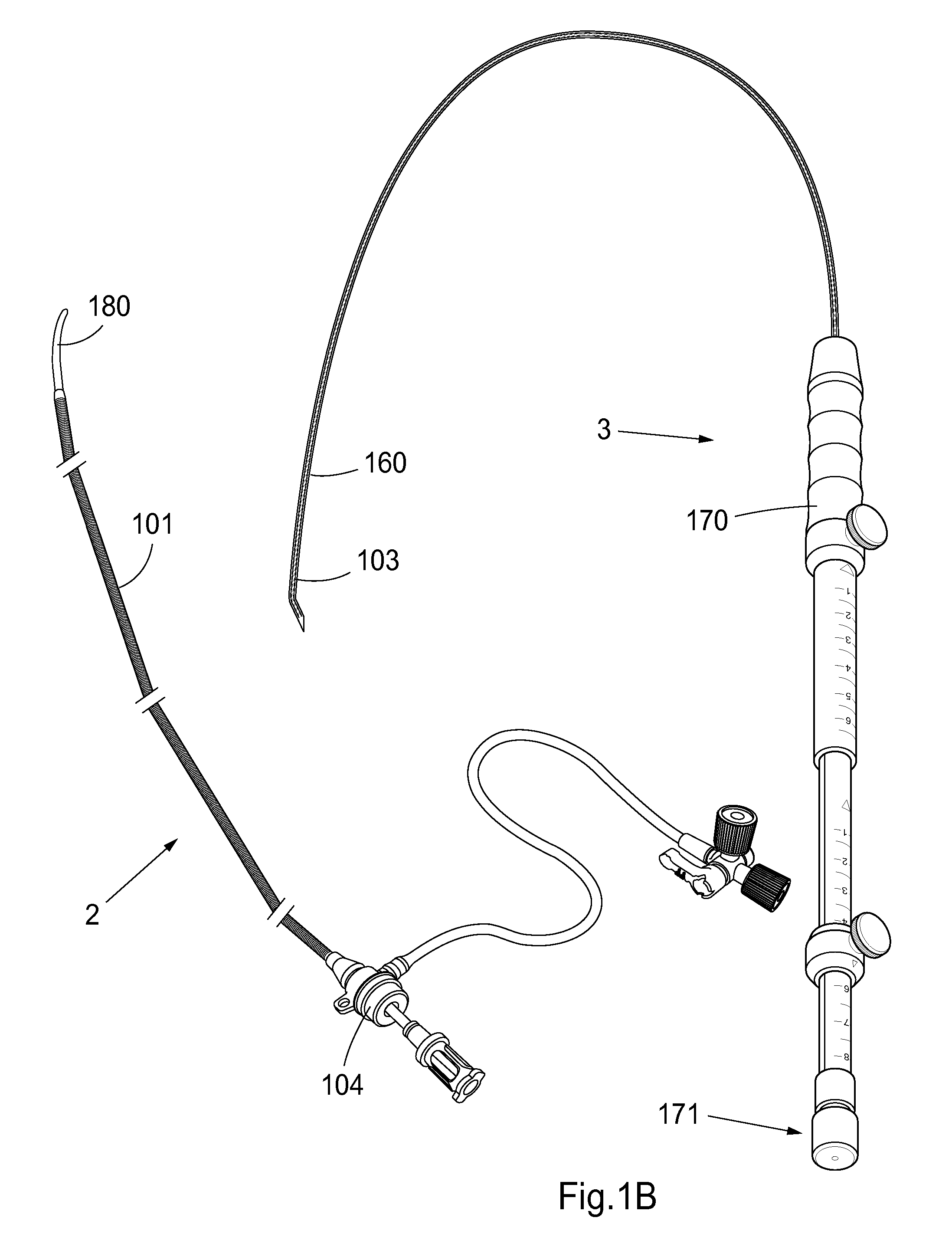Device, system, kit, and method for epicardial access
a technology of epicardial access and device, applied in the field of epicardial access devices, systems, kits, etc., can solve the problems of insufficient blood circulation in various areas of the heart musculature, loss of human lives, and enormous harm to the community through these illnesses, and achieve the effect of reducing immunological or rejection complications
- Summary
- Abstract
- Description
- Claims
- Application Information
AI Technical Summary
Benefits of technology
Problems solved by technology
Method used
Image
Examples
Embodiment Construction
[0072]Specific embodiments of the invention will now be described with reference to the accompanying drawings. This invention may, however, be embodied in many different forms and should not be construed as limited to the embodiments set forth herein; rather, these embodiments are provided so that this disclosure will be thorough and complete, and will fully convey the scope of the invention to those skilled in the art.
[0073]The terminology used in the detailed description of the embodiments illustrated in the accompanying drawings is not intended to be limiting of the invention. In the drawings, like numbers refer to like elements.
[0074]The following description focuses on an embodiment of the present invention applicable to a medical cardiac bypass procedure. However, it will be appreciated that the invention is not limited to this application but may be applied to many other cardiac diagnostic, therapeutic, and surgical procedures including, for example, epicardial electrophysiol...
PUM
 Login to View More
Login to View More Abstract
Description
Claims
Application Information
 Login to View More
Login to View More - R&D
- Intellectual Property
- Life Sciences
- Materials
- Tech Scout
- Unparalleled Data Quality
- Higher Quality Content
- 60% Fewer Hallucinations
Browse by: Latest US Patents, China's latest patents, Technical Efficacy Thesaurus, Application Domain, Technology Topic, Popular Technical Reports.
© 2025 PatSnap. All rights reserved.Legal|Privacy policy|Modern Slavery Act Transparency Statement|Sitemap|About US| Contact US: help@patsnap.com



